WINTERCURRENT THE 2023































221 W. Saginaw St., Lansing, MI 48933 Phone: 517.203.0123
Fax: 517.203.3334
Publisher
Tiffany Dowling
Account Managers
Megan Fleming
Melissa DeMott
Dear Reader,
Senior Editor
Kate Birdsall
Graphic Designer
Victor Sawicki
Project Coordinator
C Rose Widmann
As we race to craft the ideal resume and fantasize about our careers, it can be easy to disregard the people around us. Fortunately, callousness doesn’t thrive in the warmth of Michigan State’s department of Writing, Rhetoric, and American Cultures (WRAC)–conversations are punctuated with laughter, you see the same faces you’ve seen since your first semester and professors remember names. This imagery is what you can expect from WRA480. Tucked into a corner of Bessey Hall, it’s an environment where students discover their passion for journalism as they nurture a little digital magazine called The Current.
However, there are times when a hidden gem like WRA480 can be arduous–while the number of staff downsized to only five students this past semester, The Current’s expectation of excellence remained the same. Although we faced an intimidating workload, there was a serendipitous benefit to our limited team. Rather than hide under the security blanket of an editing role, everyone adjusted their writing to daunting style guides and learned the tools for effectively informing an audience.
Editorial Team
Yazzy Amjad, Logan Bry, Kalynna Davies, Kara MacKenzie, Sarah Munson, Jenna Piotrowicz, David Seddon
The Current is not a source of fluff entertainment; you won’t find a questionnaire or gossip column here. The articles in this issue are part of a journalist Socratic seminar between our staff and readers. We put a spotlight on books, whether it was the demand for a niche genre, representation, removing bans or reviving the appeal of reading itself. We also acknowledged the ever-present role of social media in our careers, hobbies, clothing choices, the pictures we share and our beauty standards. We even covered vulnerability in the entertainment industry and gaming community.
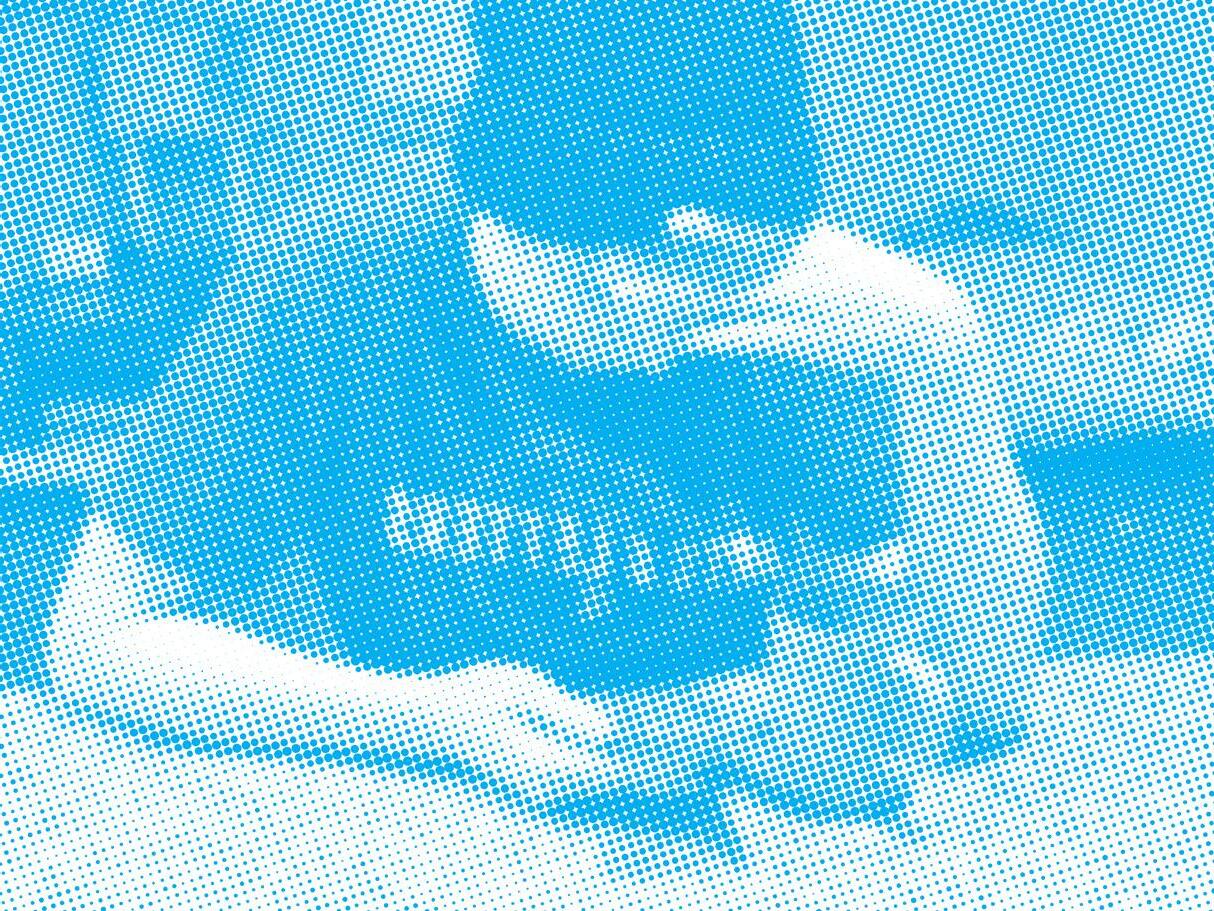
Thank you for joining our conversation. Thank you for taking the private world of WRA480 and making it your own. You may not be present for our pitch meetings or design process, but you were in the back of our minds as we prepared everything to ensure the same standard of quality you saw in previous seasons. We hope to offer some relief from the stress of an intensive college schedule and a reminder that there is more to our lives than credentials on a resume.
Sarah Munson
Is Reading Really Dead?

Banned Books: The Positives of Representation
In Defense of New Adult Fiction
Minecraft: Building Communities In and Out of the Game
Crying, Laughing: Vulnerability and Its Place In Comedy
Make Instagram Instagram Again
Let’s BeReal
Cultivating Body: Aesthetic and Ethic In Trends
The Death of the Fashion Trend Cycle
How Diverse is Publishing?
Reading logs: the bane of every grade school student’s existence. They are also a contributing factor, along with required reading, to people’s disinterest or falling out of love with reading. It has been speculated by publishers, book critics and teachers, that because of the gradual decline in students’ interest, reading is now dead. And that overall, the novel is dying. But with the help of social media, the world questions whether or not reading is actually dead.
Social media has changed the book industry, starting on YouTube around 2013 when “BookTube” reached its height in popularity. #BookTube is now a staple subgenre on the platform focusing on all things books. On this side of the platform, content creators were, and still are, pulling in around 500,000 subscribers from their videos of book recommendations, vlogs, hauls, to-be-read piles, tags and more.

During this era, dystopian, science fiction and fantasy novels were all the rage. These genres of books were so popular, they seemed to have been driving the film industry at one point, bringing in hundreds of millions in the box office. Dozens of books, specifically young adult books, were being adapted for the screen, some of which included the “The Hunger Games” series, “Divergent,” “The Fault in Our Stars” and many more. Peoples’ love for books and reading was driving pop culture at the time.
Over on Instagram, a community of bibliophiles found each other through the hashtag “Bookstagram.” Here, literary fiction and pretty photos of end pages or a cup of coffee and an open book caught the attention of many bookworms. Some content creators raked in upward of 300,000 followers. Some influencers had the opportunity to take over a publishing house’s social media for a day, receive books for

review and take part in paid partnerships.
A few years later, book lovers entered a social-media-centered cycle once again. BookTok, a community of bibliophiles on the social media app TikTok, has been taking the book industry by storm. The community has taken “word of mouth” to new heights. Books published years ago, such as Colleen Hoover’s “It Ends With Us,” quickly climbed their way up bestselling charts. The driving force causing viewers to pick up certain titles is not solely the author but how it makes the reader feel.
This was especially relevant at the height of COVID-19 lockdown, as people looked for ways to escape their reality. Everywhere they turned was a new horrifying pandemic statistic or another natural disaster infographic shared on someone’s Instagram story. When the world became too much, Book-


Tok, and all of its recommendations, were right there at one’s fingertips.
This is the case for Wayne State University student and avid reader Loren Safta. Safta states that “reading during [the COVID-19 lockdown] gave [her] an outlet, a way that [she] could experience hundreds of thousands of worlds and lives without risking [her] safety and the safety of [her] family. Even though [she] couldn’t go outside, [she] could still travel and [she] could still meet hundreds of new people and hear hundreds of new stories.”
The combination of BookTok’s growing popularity and a sense of escapism has led to the growth of specific genres in publishing. BookTok has promoted sales for young adult and new adult novels, specifically romance books and other fiction works such as literary fiction and “chick-lit.”
This growing demand is resulting in cover design trends, such as
cartoon characters on the front of romance novels and centered swords on fantasy covers, as readers seek out the most “aesthetic” cover of their favorite book or next read. Even trending books seem to include specific content as readers demand more books with favored tropes like enemies-to-lovers romances, sequels to books authors never thought to write, and movie and TV adaptations.
Safta, who loves to read books from several genres, has noticed her reading habits have changed due to social media’s presence in the book world. “I tend to base my selections now on what is more popular or what I’ve been seeing circulate
around online. I have found a couple of really good books through social media that I never would have picked up or I wouldn’t have thought to pick up if I hadn’t heard about them through a platform,” she says.
Books are the new hot commodity. America’s largest bookstore chain, Barnes and Noble, partnered with TikTok over the summer to create the #BookTokChallenge. The goal of the challenge was to encourage readers to discover new books and
authors and then use #BookTok to share their thoughts on what they read online. This was an interesting tactic. It pulled people in and used publishing’s greatest weapon, word of mouth, to encourage reading and therefore drive book sales.
Even subscription services related to books have been created. For example, Book of the Month, which curates a list of books readers can choose from; and Illumicrate, which includes a special, limited edition of a particular book and themed book-related items like mugs and stickers.
People within the book community continue to find new and innovative ways to promote their love for stories, whether that be through sharing book reviews, subscribing to content creators or purchasing book-related merchandise. The lifespan of reading and books is only growing. So, is reading really dying?
Yasmeen (Yazzy) Amjad is a senior pursuing degrees in psychology and professional and public writing. She hopes to use her knowledge of rhetoric and psychology to effectively edit and write stories. Yazzy is passionate about all forms of storytelling. In her free time, she enjoys baking, watching movies and TV shows, listening to podcasts, and reading for hours on end.

Having the opportunity to read is like sitting down and leaving the world behind to step into an entirely different life. It allows for a person to learn about something new, to open their eyes to another culture or perspective that they might not have had the chance to see before. This is an experience that everyone should have, to choose whatever book off of the shelf that catches their eye. However, some appear to disagree with this freedom. At least, that is what most believe when it comes to sitting down with a book. Others? Not so much.
A new spark of controversy has lit up the nation as this not-so-new practice of “book banning” has begun to rise up again. Book banning is when administrators, school boards or social groups revoke access to certain books based on their content. Examples crop up in states such as Oklahoma, Florida, Texas and Utah, among others who have previously or are in the works of creating new restrictions for schools and libraries. All of these restrictions are in hopes of limiting what books should be accessible for students of all ages. This has led to over 1,500 book bans spanning 86 school districts within the past year.
When asked about book banning both in the present and in the past, high school English teacher Stacy Fritz said, “I have heard about book banning recently and in the past. Often, the ban was centered around banning a list of books in schools. Though there have been times I’ve heard about groups trying to ban books from public libraries. There are also groups that support banned books specifically.”
One group is known as Moms for Liberty. In a Grid News article titled “Book banning in U.S. schools has reached an all-time high: What this means, and how we got here” by Christian Thorsberg, Matt Stiles and Anna Deen defines this group as one that is “dedicated to fighting for the survival of America” and advocating for parental rights at all levels of government, “including the right to control what their kids read in
school.” The article states that the goals of groups such as Moms for Liberty is to ensure some books are removed and inaccessible to students until they’ve left high school.
The question here, though, is why should parents care about what books are available to students around the country and within their local school districts?
Fritz attempted to answer that question. “In my opinion, banning age-appropriate books stymies the potential growth of the reader(s). It denies them the opportunity to learn about other people and thus to develop understanding and compassion for those who have different backgrounds, experiences, etc. Those earlier exposures can make for a more aware and thus kinder adult, as well as foster other attributes that would be useful (like flexibility, critical thinking skills, etc).”
“Gender Queer,” by Maia Kobabe, is currently the most challenged book in American schools for its depic-
tions of LGBT themes. By removing access to books like this and others like “The Hate U Give,” by Angie Thompson, students may go through K-12 without their perspectives challenged.
The solution is introducing students to new identities and experiences outside of what they’ve lived or what their parents have deemed “appropriate.” In a world where a person will undeniably be exposed to people who are different to them in terms of sexuality, gender, race or culture, it’s critical that these skills and broad moralities are created early in order to further create a world full of more accepting individuals in society. Another teacher, an elementary school teacher who wished to remain anonymous, said, “I encourage my students to read whatever they can because our classroom isn’t full of kids who look or act or think the same way, and I want them to understand that that’s okay. Reading will help encourage that.”
Representation is defined, generally, as a depiction or description of a person or a thing, However, representation in literature is when
a character resembles the reader or a group of readers in any aspect, whether that is race, sexuality/gender, etc.
The ability to see this representation is important to a child’s own self esteem as well. A Humanium article titled “The importance of children’s representation in literature and media,” by Arianna Braga, cited a study by (Ward, 2004) that claims identifying with characters with similar identities leads to higher self esteem. By taking away books that showcase main characters that are people of color, queer or even disabled, the chance for children and teens to feel accepted and uplifted are also taken away.
Adolescence in the public school system is difficult, especially as teens find out who they are, what they identify with and where they belong amongst their peers. Banning books such as “George” (or newly renamed “Melissa”) by Alex Gino, a storybook about a transgender kid, or “The Perks of Being a Wallflower” by Stephen Chbosky, a coming-of-age novel about trauma and high school, because of their content will further the stigma around topics that the conservative
demographic of society desperately tries to sweep under the rug.
Fritz said, “I was a pretty precocious reader and curious about learning, well, whatever I could. Many of the books on the list that I read are books that helped me see the world with more understanding.”
Not every parent, teacher or even bookseller agrees with the censorship of books, and many are looking to fight the ban. From the creation of Banned Book Week — where books and reading are celebrated by encouraging readers to indulge in a banned book — to the unionizing of Unite Against Book Bans — a national initiative that aims to push back against book bans in public and school libraries. Bookstores around the nation are setting up tables and displays that specifically put a spotlight on banned books, bringing attention to what’s being left out of libraries. And parents are taking a stand in their own school districts to put a stop to those who seek to censor important messages.
Npr.org’s article “Book bans and the threat of censorship rev up political activism in the suburbs,” by Oddette
Yousef, recognizes the actions of a group of primarily left-leaning parents who are called ”‘Red, Wine & Blue.” This organization, growing from just Stephana Ferrell to over 300,000 members, uses their numbers as a way to fight against these bans.
In light of Ferrell’s work, Yousef said that “Ferrell hoped her experience organizing a campaign against book challenges might be instructive to others who similarly oppose what she views as a politically-driven campaign at children’s schools.” This is just one example of many parents, organizations, and initiatives that are all trying to keep censorship out of schools and libraries around the country.

Banning books in schools is a step to silencing voices, stigmatizing what should be part of the norm, and taking away representation that boosts children and teens’ self identities and worths.
The anonymous teacher said, “I remember being in school myself, looking through the library shelves and being ecstatic to find books that I could relate to in some way, even if it was miniscule. I can’t imagine taking that away from students just to align with a certain narrative.” But this teacher isn’t the only one who had this revelation. Parents, teacher, librarians and more are fighting for action — hoping to showcase silenced voices that rise from BIPOC, queer and other marginalized communities — in classrooms all around the nation.
Oliviah Brown is a fifth-year senior double majoring in English and professional writing, and minoring in digital humanities. Her aspirations are to use her studies to pursue a career in editing. When she’s not studying, she is usually reading or figuring out new recipes to bake.

In my opinion, banning ageappropriate books stymies the potential growth of the reader(s).
“ “
“Red, White, and Royal Blue.” “A Court of Thorns and Roses.” “It Ends With Us.” “The Magicians.” “Fangirl.”
Although you may not know it, if you are familiar with these titles then you are familiar with the emerging, little-known category called new adult fiction. Although books like these have recently dominated bestseller lists in the United States, the category itself receives little attention and is highly stigmatized by the publishing community.
Coined in 2009 at St. Martin’s Press, the term new adult fiction refers to books that “bridge the gap between young adult and adult genres,” according to Goodreads. Although it is often misunderstood by publish-
ers and booksellers, the category is not simply young adult (YA) with sex scenes and explicit language. Instead, it combines aspects of both YA and adult fiction to tell stories that appeal specifically to those who are beginning to navigate adulthood for the first time: no longer adolescents, but not quite established adults either.
Writer’s Digest columnist Kristan Hoffman describes new adult as a category that is all about transition. “The transformation from child to adult doesn’t happen overnight … but the transition from teen to adult doesn’t happen overnight either. There’s a period of time where adulthood feels like a new pair of shoes. The expectations of inde-
pendence and self-sufficiency are still new, still being broken in. New adults are the people who have just begun to walk in those shoes; New adult fiction is about their blisters and aches.”
New adult fiction provides its readers, who are mainly 18–25 years old, with stories that center around their experiences with mental health, social issues, sexuality, emotional growth, relationships and coming of age. Although these are themes that are shared by both YA and adult fiction, new adult is able to present them from the distinct perspective of a person who is navigating the adult world for the first time, addressing readers who want books that reflect their unique
experiences, situations and challenges.
For readers like Yazzy Amjad, a senior at Michigan State University, the category is extremely valuable. “I read new adult because it’s more relatable for me nowadays,” she said. “I’m in an in-between stage of wanting a book with the pace of a young adult novel (and sometimes the writing style) but with situations that people in their early adulthood face.”

Sydney Savage, a reader and author of new adult fiction, agrees. “Your 20s are the time to try new things and experience things and find out who you are, and I love that there’s a genre for that,” she says. “I read and write new adult because, being a young adult, it’s nice reading a story and realizing I’m not alone.”
According to journalist Vi La Bianca, these stories can be especially important for those whose self-discovery journeys occurred outside of high school.
“Self-discovery being reserved for the high school arena — besides being unrealistic (maturation is never started at 14 and finished by 17) — is fundamentally biased against groups that might not have had the
ability to even begin that process until they were much older,” they wroite in an article for Medium. For those who did not have their own coming-of-age experiences as adolescents, new adult addresses a crucial gap in the traditional publishing industry.
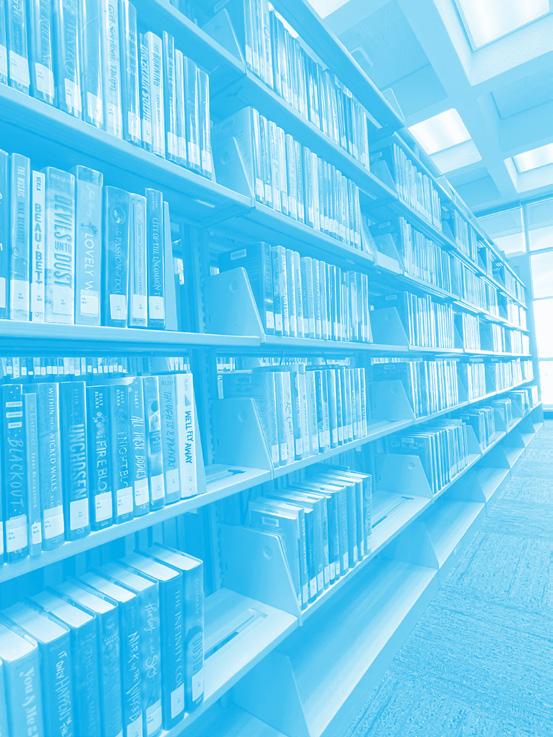
One group of readers who can especially benefit from this unique representation is the queer community. Many queer people were not willing or able to come out before leaving high school, which means that they did not experience a traditional self-actualization period when they were young.
La Bianca states that “first crushes, first relationships, interactions with family, entry into their careers, etc.
may come much later, in college or even after. This means there is not only a dearth of books where queer protagonists are even represented, but that coming-of-age stories are perpetually geared towards different age ranges.” New adult is a way for young queer adults to see themselves and their journeys to adulthood represented in a way that they are not in other categories.
Critics of the category claim that it is an unnecessary distinction. However, the ways that the themes of unfamiliar responsibilities, obstacles and emotional challenges are explored can vary dramatically between teens, well-established adults and those who are navigating the space in-between. As Hoffman writes, “New adult fiction has the
nice reading a story and realizing “ “ I’m not alone.
potential to help facilitate new adults through the immensely stressful and emotional experiences they face in their day-today lives,” something that YA and adult fiction may not be able to do as effectively.
If new adult fiction is such an important category then why is the term, which has existed for over a decade, still so obscure? The answer to that question involves a combination of misunderstandings, stigmatization and controversy that has resulted in new adult being discarded by the publishing industry, ignored by booksellers and criticized by readers.
One reason that the publishing industry and readers alike have rejected the new adult label is the misconception that the books are just YA, but explicit. The category is dominated by romance and erotica novels, which have unfortunately caused it to be highly stigmatized, such as in an article for popular culture magazine Flavorwire titled
“The ‘New Adult’ Genre Is Still Condescending and Pointless.” In this article, writer Emily Temple calls new adult “mostly an artificially cre-
ated genre,” claiming that the books are “just YA novels with extra sex.”
Savage has seen the popularity of erotica in new adult, and she wishes that these themes were not seen as necessary. “I feel like sometimes new adult romance [authors] feel like there needs to be sex scenes and sexualized characters. But there’s more to love than sex, and I don’t think they’re always needed.”
“I think it’s adding to the confusion and negative views from publishers [about] the genre. Having a romance-dominated genre adds to the oversexualization,” says Amjad, who has recently noticed publishers and readers spurn the category. “Sex and romantic relationships aren’t the only concerns people in their early to late 20s have. It would actually be nice to see a novel written in the new adult fiction genre not geared to romance. It would provide more chance for relatability for readers.”
Indeed, New Adult fiction relies heavily on its relatability to its target audience. If romance and erotica are its only books with visibility, then a large part of the intended audience will move on to a new genre.
Although many of the most wellknown New Adult books do have erotic themes, this is by far not their only appeal. There is much more to discover in the New Adult category, if only it was given a fair chance.
Another reason that New Adult has been rejected by publishers and booksellers is its low marketability. Shelving the books in the Adult section means that they will be hard for the target audience to find, but shelving them in the YA section risks children and young teenagers picking up books with mature scenes and language. As Sarah Nicolas writes for Book Riot, “It unfortunately makes sense for publishers to classify these books for adult or young adult shelves and market them as crossovers, because there are no new adult … sections in major book review publications.”
The books are also unlikely to have their own shelf space in libraries and bookstores. This space is primarily divided based on traditional genre labels, which means that it is doubtful that a new category such as New Adult would get its own section. Even if it did, booksellers are hesitant to use the label, as it could be mistaken for new releas-
es in Adult fiction, which makes it extremely hard to advertise.

With all of the controversy surrounding New Adult fiction, it is hard to predict whether the relatively new category will last.
At times, it feels unlikely that new adult fiction will be picked up by the mainstream publishing industry. It is hard to market and advertise because of its obscurity, and the category has been highly stigmatized by readers despite its uniquely relatable themes.
Amjad is skeptical of the category’s longevity for these reasons, saying “I think the content of the genre will stick around, but the title of the genre — I’m not so sure. I think whether this genre sticks around for some time [depends on] whether or not they choose to axe the term ‘new adult.’”
However, Savage believes that readers need New Adult fiction too much for it to simply fade away. “I do think the genre will be around a long time simply because there will always be young adults who are trying to find themselves,” she said.
New Adult is a relatively new category, so there is a chance that it has a long future ahead of it. It won’t be easy, but if it can overcome its controversies and convince publishers and readers of its value, then it could be here to stay. After all, there will always be readers who would benefit from seeing their long, complicated journeys to adulthood represented.
Kara MacKenzie is currently a senior studying professional & public writing and women’s & gender studies. She is interested in the intersections between rhetoric and social justice, and hopes to one day use her communications skills to benefit a nonprofit organization. In her personal life, she is an intramural volleyball player, plant mom, artist, and avid reader.

“ “
Minecraft is a 3D online game developed by Mojang Studios that invites players from all over the world to work alone or with a group to create, build and discover within a virtual world with no end goal and almost limitless potential. In this game, there isn’t a specific set of rules or guidelines to follow.
Upon beginning, players “spawn,” or enter the world in a seemingly random location, and off they go. Players are given the ability to mine blocks of materials such as dirt, sand, wood or stone among others, which can be used to build houses, villages, or different structures unique to each player. “Minecraft is a sandbox game with endless possibilities, [with] such an active community of players and viewers who
share many common goals,” said Allie Spectine, a Minecraft streamer and an active player who has made time to play almost every day for the past two years.
Picture this: You sit in your gaming chair and turn on your computer. The subtle hum of its fan comforts and relaxes you as you think about that level that you had left off on the night before or how you’re going to try to beat that final boss.
But Minecraft takes the comfort of relaxing gaming time one step further by maintaining its own massive gaming community, as its players aren’t necessarily burdened by battles or leveling up. Players can build houses, mine pixelated blocks and form communities with

other like-minded players. These communities can then go on to do good on both a personal and broader scale. It has become known as a world-building game full of creativity, collaboration and community engagement.
In a time when sitting in front of a computer screen has become more of a norm than ever before, Minecraft’s popularity has skyrocketed. In Charlie Intel’s article “How many people play Minecraft? 2022 player count,” writer Aakrit Sharma claims that Minecraft’s player count as of August 2022 had reached upward of 173 million average active players each month, which is a 40 million player increase since the beginning of 2021. With such a high amount of average players, it’s not unlikely that
Brown
It has become known as a world-building game full of creativity, collaboration and community engagement.
many would be venturing out into a virtual world with a group of their friends.

Instead of playing on the computer alone, Minecraft players are able to socialize with friends without leaving the house, extending past the barriers of distance, illness or time constraints. Gavin Brown, an occasional Minecraft player for over 10 years, says that he plays with a group of friends on the Discord app, using voice chat to communicate with one another. For the past few years, it was difficult for him to see friends face-to-face, so using this interactive multiplayer world to “hang out” with friends was great, he said.
This raises the question of how impactful the game is on the social abilities of those who play. An internetmatters.org article titled “Online video gaming benefits” claims that online multiplayer games “can help nurture relationships through shared moments.” The article adds that “for children who may have disabilities, it can also be a way for them to make friendships they may struggle to create offline and contribute to overall child development.”
Playing video games, Minecraft specifically, gives children (or anyone for that matter) the chance to expand their world through online friendships and bonds that they would otherwise not be able to create in the physical world. Josh Smith, a fan of the game, considers Minecraft to be a community-building game in this way because “of the multiple servers with players who join in with shared interests to build a world. You’re bound to make connections.”
Looking past the boundaries of pixelated blocks, pickaxes and netherworlds, Minecraft has found its way into other social media. Like with many interests, groups of enthusiasts make their way out of the game and onto platforms such as Twitch where they can watch and follow along with their favorite players. Twitch is a free livestreaming platform and is a popular venue for Minecraft players to broadcast their games in real time to their fans. “Minecraft has helped to grow platforms like Twitch and YouTube and, in turn, helped to grow esports as a whole,” said Spectine.
These media platforms have allowed for interaction both between
viewers and between the viewers and streamer, which disrupts the dissonance between a “celebrity” figure and the average person. By having a deeper connection to one’s favorite streamer, it’s easier to feel the strong bonds made within the communities that a person might be involved in. And vice versa, these streamers have used their close connections with their fanbase to do good in the world.
As players such as Ranboo, Grian or Dream among others grew in popularity due to their content on Twitch and YouTube, we’ve seen their fame being used for good. “TommyInnit, for example, just finished a twoweek-long campaign where he raised thousands of dollars to help the homeless population in New York,” Spectine said, as an example of the good-natured philanthropy of the financially well-off creators. “Grian from HermitCraft has raised money from every single livestream he’s done to build a school in Ghana, which has helped to educate so many children in the past two years. And it’s all because of Minecraft.”
The idea that a game such as Minecraft can be influential on both a small and large scale isn’t one

And it’s all because of Minecraft.
“ “
that many would believe, but with a growing fanbase from around the world using social media to connect with others and to check in on their preferred streamers, there are a lot of positives that can come out of playing a game.
A well-known streamer called Technoblade, who recently passed away due to cancer, went above and beyond to raise over half a million dollars for sarcoma research. Con-
sidered one of the best by many, Technoblade used gaming for good, and won a Courage Award for his efforts, according to the Sarcoma Foundation of America’s Technoblade Tribute. After his death, his memory continues to drive fans to donate to research and charities. This one example of community is heartwarming and just goes to show how truly connected people can become just for the love of a person who plays a video game.

... there are a lot of positives that can come out of playing a game. “ “
To some, Minecraft is just a game. To others, it’s a community — a way of finding and creating friendships, a way of finding a place among others who share the same passions, and a way to add good to the world one person at a time. Smith feels that it’s a game open to pretty much everyone, that there are so many different topics and groups of people who play, that people are exposed to others’ ideas and creativity and viewpoints.

Smith isn’t the only one that believes this. Spectine added that she “feel[s] like this game in particular has helped so many people, whether personally or indirectly, and [knows] there will be a lot more that this game and the community surrounding it will accomplish in the upcoming years.”
The legacy that the people and community associated with Minecraft has left will continue growing as years go on. For now, however, one can be satisfied with simply knowing that they’ve found a place that they belong.
Oliviah Brown is a fifth-year senior double majoring in English and professional writing, and minoring in digital humanities. Her aspirations are to use her studies to pursue a career in editing. When she’s not studying, she is usually reading or figuring out new recipes to bake.
When asked “what is the role of a comedian,” many would answer that it is to produce laughter. People typically associate comedy with happiness — a valid connection — but for many standup comedians, comedy also has an indescribable link to tragedy.
Each performer brings an individual history to the stage; and while
some focus more on “edgy” topics, such as Dave Chappelle, Louis C.K. or even Tiffany Haddish (who have all been called out in recent years due to the offensive nature of their comedy), there are others who put an emphasis on not making legacies from opposition, but human connection.
Many are aware of these names because they have all been involved in some kind of scandal in the past years. Each comedian has found themselves under fire due to basing their comedy off of the plight of others. Chapelle’s special “The Closer”
featured inappropriate jokes concerning transgender people, Louis C.K. was under fire for his treatment of women and Haddish for her actions toward children in the name of comedy.
While they all make themselves open when putting their art on display for the world to see, newer comedians are beginning to turn away from this kind of humor, opting for another kind of visibility.
“It requires an openness with a crowd,” one anonymous comedian on Michigan State University’s campus says. “Joking about the stuff
even you have a hard time talking about.”
Yes. Vulnerability. The root word, vulnerable, as defined by Merriam-Webster, means “capable of being physically or emotionally wounded.”
Merriam-Webster also provides a bit of history, stating that “since the late 1600s, it has also been used figuratively to suggest a defenselessness against non-physical attacks. In other words, someone (or something) can be vulnerable to criticism or failure as well as to literal wounding.”
It is safe to say this is not a comfortable feeling, and, for many artists, is
an uncomfortable choice. But something in their craft calls for attention to authenticity, it calls for truth, especially in a world where so many people are not living their own. Hampered by concern for maintaining relationships, public image and a job, most people could not fathom being honest with themselves on top of it.
To be vulnerable is to speak about what one knows to present themselves as not “right” to a “wrong,” but human. Capable of flaws and bad choices but capable of reflection, and transparency as well.
Comedians discuss the issues of today and set the stage to tackle the problems of tomorrow. In contrast with the ‘80s, where topics mainly focused on the external, comedians
of today have managed to turn their attention inward to produce standup work straddling the boundary between too real, too intimate and too hilarious.
There is a hunger for narratives like this. Standup comedy has the uncanny ability to take artists and give them wider platforms than just one stage. With Netflix specials, scripted TV shows and even the credibility to work on projects as a director or writer, there are a number of prominent names in business working to bring the vulnerability in comedic self-awareness to widespread audiences.
Some are older, such as Richard Pryor openness is a common thread in all his specials with his ongoing health issues. Murray Frymer, a
Comedians of today have managed to turn their attention inward to produce standup work straddling the boundary between too real, too intimate and too hilarious.
critic, wrote about Pryor’s 1992 performance at Los Angeles’ Comedy Store when Pryor was being ravaged by his disease, multiple sclerosis.
But most examples are newer. One notable name is Bo Burham, with his nearly claustrophobic feel of his Nexflix special “Inside”: a hyper-focused narrative describing Burnham’s depression amidst the COVID-19 pandemic.
Hannah Gadbsy’s “Nanette” is another example, with an evocative, comedic storytelling centered around experiencing mental illness and womanhood as an LGBTQ+ person.
There is Jerrod Carmichael, who recently won an Emmy for his special “Rothaniel,” which was an intimate and experimental show not just about coming out, but the rejection that can accompany inviting people in.
These performers all seem to bind comedy with the occasional tragedies of life and something about that draws in crowds from all over. Something about human emotion, there for the whole world to see, gives it an allure.
This allure has encouraged viewers to want to see more of this content in long form media, such as Bo Burnham’s “Eighth Grade” (2018), a film about a young woman navigating her way through life. Another example is Quinta Brunson, who began her career as a Viner and standup comedian, but is now working on shows that highlight vulnerability such as “Black Lady Sketch Show” or “Abbott Elementary.”
Dr. Brené Brown, author of “The power of vulnerability: vulnerability, authenticity and shame” asserts in a 2011 TED Talk, “The more afraid we are, the more vulnerable we are, the more afraid we are.” This is a quote that speaks on the nature of humanity, and somehow, comedy does the work of overcoming that blockage.
It makes the vulnerability and dread easier to handle, according to frequent comedy show attendee Joy Pearson. “Comedy isn’t always all laughs. It can be serious, too you could cry, reflect and then have a good chuckle.”


There are opinions in academia that would disagree with the conflation of serious and silly. For example, in his 1911 essay titled “Laughter: An Essay on the Meaning of the Comic,” French philosopher Henri Bergson states that “the absence of feeling usually accompanies laughter [due to a] momentary anesthesia of the heart,” which can lead to anything becoming laughable if one decides not to care about it.
Perhaps this is what has allowed more callous pieces of standup to exist throughout the generations: it is easy to pin jokes on communities or people you don’t know or care about, and much more difficult to be open about oneself.
There’s something admirable about this, and it is much more common

amongst younger generations. According to the Pew Research Center, “Post-millennials are on track to be the most diverse, best-educated generation yet,” which speaks to a desire to see innovation, inclusivity and support in all kinds of media.
While this development is a good thing, it has also lended itself to cancel culture on the internet, where individuals “cancel” others based on their behaviors. While being aware of the sexism, racism and homophobia present in these spaces is a good start, the only real way to promote change in this space is by action, and not giving them a bigger platform to spew their vitriol.
In spaces like standup comedy, movies, or TV, it’s important to note they are not the cause for societal problems, but reactions to them. In order to tackle issues of societal imbalance, consumers must be willing to not just call it out on Twitter, but in real life as well.
Full, all embracing narratives have been an age-old desire from anyone standing on the fringes of society. They have been coming to fruition in younger generations and the standup comedian space for years. By being real and, more importantly, painfully human, this era of comedy aims to break out of the old mold transforming the professional comedy space from callous mockery to inclusive storytelling.

Kalynna Davies is an English major in her senior year. She has a concentration in creative writing and a minor in film — these are both activities she enjoys outside of the classroom, as well. In the future, she intends to use these skills to cultivate counterstories in an array of media — from novel to film.


In an age where social media giants seem to control everything, it is getting harder for independent content creators to support themselves. As algorithms shift and social media sites become more and more similar to one another, users are becoming frustrated and creators are increasingly forced to adapt their content just to keep up.
Unfortunately, this is nothing new. In January 2013, Vine became the first platform to offer an easy way to create and view short-form video content. Only six months later, Instagram implemented its own (remarkably similar) video player, which was the beginning
of Instagram’s copycat reputation. By October 2016, Vine was forced to shut down due to high levels of competition.
That same year, Instagram struck again when it introduced its own version of Snapchat’s Stories. Other social media platforms quickly caught on, and soon enough Facebook, Twitter, TikTok and even LinkedIn were releasing their own versions of the feature. By 2022, Instagram Stories had become more popular than Snapchat, but the social media giant didn’t stop there.
Possibly the most well-known instance of stealing features was In-

stagram (and later Facebook) Reels, which is a practically undisguised ripoff of TikTok’s scrolling full-screen video feed. TikTok’s CEO seemed unbothered by the situation, saying, “At TikTok we welcome competition. … To those who wish to launch competitive products, we say bring it on.” However, YouTube also went on to create its own version of the video feature with YouTube Shorts, which has reportedly become even more popular than TikTok as of June 2022, according to Gizmodo.
Even BeReal, which had just begun to gain popularity in early 2022, is now being copied by Instagram and TikTok, which have implement-
Kara MacKenzieed the same timed dual-camera feature on their own sites. It seems that every social media site now features a news feed, private messaging, stories, live broadcasting and short videos. It is clear that social media apps have no qualms about stealing features from one another, and Instagram is notorious for this. In their quest to attract as much of TikTok’s audience as possible, Instagram has even begun to copy TikTok’s algorithm. Instead of its traditional feed, which features mostly photos from friends and family, users’ Instagram feeds are
now flooded with ads, recommended posts and Reels.
This is frustrating for many users who signed up specifically to see updates from people that they know. As Christina Alexander writes for Digital Trends, “The TikTok-ification of Instagram takes away the type of content people love most about the platform: photos from friends and family.”

Avery Tyson, a content creator and student at Michigan State University, said that she is extremely frustrated with the changes.
“I understand that all platforms are going to have some similarities, but Instagram should be a photo-sharing app. Every single social media platform is copying one another, and it is so annoying.”
Some of the creators who have been most affected by the changes are small-business owners and influencers. Social media can be one of the most important ways for creators to advertise their work, something that Katarina Keeley, a photographer and content creator, has experienced firsthand. “Social media is beneficial for any business you’re trying to do, it spreads awareness. I definitely think it’s important.” For Keeley, who does concert photography, Instagram is a crucial way to get her photos noticed by larger audiences.
Unfortunately, creators like Keeley who have used Instagram to support themselves in the past are finding it harder to keep up with new features and changes to the algorithm. The increase in ads and sponsored content means that users are less likely to see posts from influencers that they follow, forcing creators to adapt their content to
“ “ THECURRENTMSU.COM 29
ADS, RECOMMENDED POSTS, AND REELS.
the algorithm just so they can reach crucial audiences.
A new algorithm that makes it more difficult to get noticed also means that it may be harder for influencers to secure brand deals and make money from Instagram in the first place. “The change will affect the entire ecosystem of businesses,” said Sarah Frier, a journalist for Bloomberg. “The value of an Instagram influencer’s large follower list goes down if those people aren’t as likely to see their content.”
The shift from focusing on still images to prioritizing Instagram Reels has also had an impact on content creators. Many influencers feel they are forced to choose between creating inauthentic, algorithm-driven content or fading into the background. It is harder for an artist to get their photography noticed if they can only advertise it in video form, but if they do not transition to posting Reels then they may experience a huge decline in engagement anyway.
Reels that I do get a lot of traction, more than my photography.” It is clear that Instagram is leaving creators little choice in the content that they put out if they want to remain relevant.
Tyson, who relies on her high Instagram engagement for brand deals and career marketing, has also noticed the effects of this new algorithm, saying “I [am] posting more videos because I need to if I want to grow my brand and keep working with companies.”
In fact, some of the platform’s most followed people have recently spoken out against the changes, sparking a viral movement. On July 23, 2022, 21-year-old photographer and influencer Tati Bruening created a meme and corresponding Change.org petition after becoming frustrated with the amount of Reels and recommended posts on her feed. The meme called for CEO Adam Mosseri to “Make Instagram Instagram Again,” adding that she wanted the platform to “stop trying to be TikTok.”
lebrities like Kylie Jenner, who is the most followed person on Instagram. Jenner, along with her sisters Kim and Kourtney Kardashian, shared the meme, with Jenner commenting “PLEASEEEEEEE.”
The online petition, which was addressed to Instagram and Meta, proceeded to rack up over 300,000 signatures. Titled “Make Instagram Instagram Again,” the petition calls for the platform to go back to its roots, showing users the photos
Keeley says that she has recently noticed her Reels gaining popularity, while her photos do not get nearly as much engagement. “The
The meme immediately took off within the photography community, later catching the attention of ce-

from friends and family that they came to Instagram for in the first place. “It feels wrong to switch the algorithm on creators [who] have made a living and contributed to the community, forcing them to change their entire content direction and lifestyle to serve a new algorithm,” the petition reads. “Listen to the community. Take our thoughts and requests into consideration!”

Tyson also thinks that Instagram should stop trying to be something it’s not. “People joined Instagram because it is a photo-sharing app, not because it’s a video-sharing app,” she said. “We want to share still images while being pushed to share reels, and … I think
it ruins the point of having multiple platforms.
“[The point of] having different platforms is to show different content, not the exact same content a thousand different ways.”
Keeley agrees. “I hope that photos don’t go extinct,” she said, adding that users and creators should be able to use social media sites in whatever way makes them comfortable.
Clearly, neither consumers nor influencers are happy with the changes, and it is easy to see why we need to make Instagram Instagram again.
Kara MacKenzie is currently a senior studying professional & public writing and women’s & gender studies. She is interested in the intersections between rhetoric and social justice, and hopes to one day use her communications skills to benefit a nonprofit organization. In her personal life, she is an intramural volleyball player, plant mom, artist, and avid reader.
I am posting more videos because I NEED to if I want to grow my brand.
“
In early 2022, an app called BeReal hit the Gen Z population. The app’s premise was to send users a notification once a day, and then they would have two minutes to stop and take a picture of whatever they were doing at that moment.
The concept was new and exciting, and in the beginning it was a fun way to see what friends were doing at an exact moment, with no filters and no “fake” captured moments.
However, the app quickly came under scrutiny. Since the two-minute timer does not begin until someone opens the app, many began to wait to take their BeReal until they
were doing something interesting. This is known as the “Posted Late” phenomenon, which defeats the purpose of being real and taking the picture at the given time.
This raises the question: can anyone really BeReal on social media? The persona that many prioritize on these platforms is something that cannot remain authentic. Although founded with good intentions, the app has become yet another calculated piece of social media.
Michigan State University student Alex Wahl has never downloaded the app. When asked why she never jumped on the phenomenon, she
Jenna Piotrowicz
said, “It just seemed like yet another social media platform to me. I have all of the other ones, and it just didn’t feel necessary to have this one.” This perspective used to be uncommon, but now even users of the app have begun to catch on to its lack of authenticity.
When asked what she thought of the BeReal app, Michigan State University student Lauren Travis noted that she has had a bit of a change of heart since the beginning of owning the app.
“Originally, it was this really cool idea. You and your friends all would stop what you were doing and post
a picture. It didn’t matter if you were in bed with no makeup on, everyone did it. But as it became more popular, it turned into something really different. People were posting late more and more often, waiting to take the BeReal until they were doing something interesting. It was totally defeating the whole purpose.”
Although a saddening turn of events for the app and its authenticity, this is nothing new in the scope of social media today. Users curate their so-

cial media accounts to portray the person they think they are, or who they want to be. A person’s artificial persona is valued by the media landscape more than authenticity. Many are aware of the reality of how that “candid” picture was simply taken to look like a candid picture.
An interview with Michigan State University student Anna Ackerman revealed the awareness that younger generations have about the reality of the media landscape.
“I honestly think it is impossible for anyone to BeReal on social media nowadays,” Ackerman said. “I feel like social media has become this space for people to create whatever image of themselves they want. They don’t need to be authentic. With filters and editing, nothing is real anymore.”
This is a common understanding among social media users. These idealized versions of ourselves are our safe spaces, and our comfort. The performative nature of these
platforms is meant to turn the mundanity of everyday life into something more interesting.
According to the article “Perceived authenticity of social media influencers” from the Journal of Research in Interactive Marketing, “despite its importance, no measurement scale currently exists for perceived authenticity of social media influencers.” With many aspects of the internet to still be discovered, a lot of this research is new and underfunded. Many don’t even realize the issues behind influencer marketing and portraying only your best self online.
So what is at the root of this necessity for portraying such a persona online? There is likely a strong
connection to the world of celebrities and influencers users consume daily.
“Our generation has grown up seeing celebrities on magazine covers, edited and photoshopped to perfection. It made us seem like these people had zero flaws. I think that has made people strive for that perfection, even if it means editing and filtering your own photos to feel more comfortable in your own skin. I think it has taught us so much more self-doubt and insecurity,” said Ackerman.
Even the moments where influencers seem to “BeReal” often are still posed and faked to seem authentic and genuine. This can be extremely misleading to an audience, and es-
pecially followers who idolize everything the influencer says and does.
With all of these issues arising, it is natural to question what people can do to change the stigma.
“I’m not sure there will ever be a surefire way to make social media totally authentic and real. I think it’s just important to have that self-awareness about your purpose on social media, and recognize the realities behind the screen and curated images. Instagram is not reality, it’s often only showing the very best parts of someone’s life.
Our generation has grown up seeing celebrities on magazine covers, edited and photoshopped to perfection.
Once you recognize that, it’s a little easier to look past the perfection we assume,” said Wahl.
However, there is some hope, and Gen Z may be the group to change it all. According to a report by GWI, 45% of Gen Z believe that there is too much pressure to be perfect on social media. This generation has the power to change these curated personalities into being more involved with self expression and authenticity, and change social media into something more important, with purpose and a voice.
Shauna Moran of GWI notes, “Some audiences are trying to close the chapter on the curated self and its unreal standards of perfection, meaning companies and social media personalities who fail to dig deeper may miss out on a great opportunity to meet followers where they are.”
The BeReal app seems to still have some steam, and doesn’t appear to be going anywhere anytime soon. In its future, one can only hope that users will come back and find the purpose of using the app for joy and specially captured moments, not more curated content.
After all, according the study “Authentic Self-Expression on Social Media is Associated with Greater Subjective Well-Being,” co-author Erica Bailey says “if people want to take part in social media, they

should use it to share what they really care about, what they are actually doing, and how they truly feel.”
In the age of technology, it may seem futile to attempt getting rid of social media. However, users can change how they consume it. They should find a purpose, a voice, and ignore what other people are doing, in favor of what makes them truly happy. Only then does authenticity in social media have a chance of rising on its own.
Jenna Piotrowicz is a senior majoring in professional and public writing, aspiring to be a writer or editor in her future. In her free time, she enjoys watching movies, TV shows and working on her own screenplays, hoping to create the next big feature film.
Bodies, like many other aspects of visual culture in the United States, have been aligned with fashion trends for years. There are many different parts to these trendsfrom hairstyles, to makeup, lifestyle and even body modification.
In this way, bodies can be identified as manufactured — as products of cultural and social surroundings. One can seemingly be categorized into a certain wealth, race and gender by the way they are perceived, or how they put themselves together. This is a flawed system — one that permits the top of social apex-
es to steal, integrate and sell back to larger, marginalized audiences. This is mostly perpetrated in celebrity and influencer circles those who rely on public attention and adoration to garner wealth, and use their following to advertise.
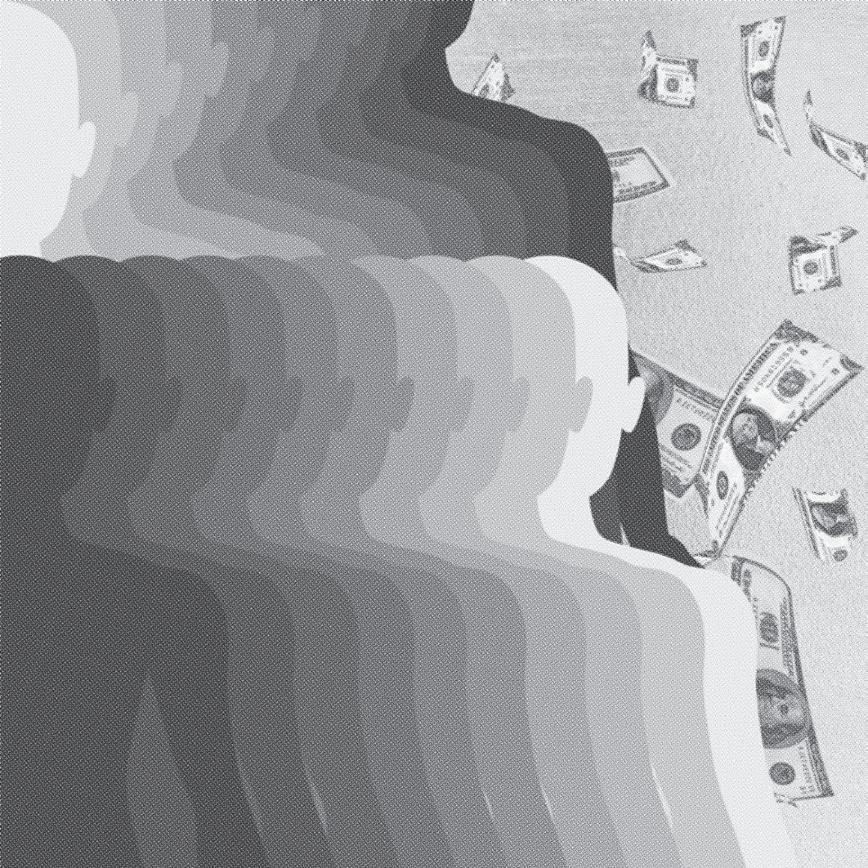
A good example would be influencers floating around on TikTok, who boast makeup techniques such as “fox eye,” or deep, dark tanning — mimicking features of different races as a trend. There are less extreme examples in aesthetics like “clean girl” that subtly aim to popularize looks that have been staples
in Black and Brown communities for years.
The timeless look consists of minimal, gold jewelry — along with a sleek hairdo; a dewy, fresh face; and lip gloss. It’s even made its way into celebrity circles, attributing celebrities such as Hailey Beiber or Bella Hadid as entrepreneurs.
In reality, it’s only so “minimal” and “effortless” in the hands of those celebrities. What is done out of innovation in Black and Brown communities is done out of immense effort for famous people who rely on their
appearance for success. This is most likely the reason why the focus of body trends have seemed to turn from just the external. Boasting the foods one must eat to retain clear skin, the appointments with their personal trainers for a perfectly snatched waist — and the constant visits to the best spas, the best doctors, the best private chefs.
It’s an aesthetic not as easily copied in blue-collar communities, since for the first time since 2011, the 2021 U.S. census reported an even larger gap in wealth. It’s not an aesthetic easily copied by Black, Indignous or other people of color, either, due to the intersection of wealth these communities historically sit at —
since the idea of “beauty” and “health” is erected by those who dominate cultural and bodily aesthetics.
The obsession with making the posed seem unconstructed takes large amounts of money, and an absorbent amount of time on social media, or in front of cameras for movies and shows. It used to be common to see American media, and even WebMD, asking “Does my butt look big in this?”
Back then, an affirmative answer may have provoked a poor response, but after wealthy celebrities such as Kim Kardashian (who initially denied the rumors of enhancements) popped up with bigger rears in the early 2010s, a big butt suddenly seemed to appeal to every mainstream trend.
This particular silhouette has been considered a desired body type in Black and Brown communities for much longer than 2010 — however, when Kardashian’s carefully curated image made it popular to have a curvy figure, it came with an influx of butt augmentation procedures in the fol-
lowing years, doubling the amount of augmentation between the years 2005 and 2011, according to the data produced by both the American Society of Plastic Surgeons, and The Aesthetics Society.
One of the more popular forms of this augmentation in 2022 is called the BBL, or the Brazilian Butt Lift. According to a New York Times article featuring a quote from Dr. Miami, Michael Salzhauer, “It’s called the Brazilian butt lift, not because it was necessarily invented in Brazil, but you think of Brazilian women having like, you know, perky butts, bigger butts.”
Some might be asking how a big butt, or makeup or a hairstyle is so closely attached to cultural identity, but the ability to buy all of these things has made it possible to buy and market features. The name of a BBL alone gives an idea of how race, commodity and wealth connotes a culture of consumption here in the United States.
In lieu of buying actual, physical bodies in times of slavery, capitalism has made it possible to buy a “brazilian” butt. It has made it possible for people to darken their skin
“ “
tones, for fashion companies like Comme Des Garcons or Kardashian to put in cornrows and call them something else — all in hopes of appealing to the masses.
But the bodily aesthetic of any race is not rooted in the same kind of choice, and features of Black and Brown people are often mocked, said to be undesirable, and then made “chic” on a white body without a nuanced understanding of cultural appropriation. The BBL aesthetic is rooted in a collection of history — having both the means and the methods to capture and produce the look has led to a flattening in aesthetics. The rich’s attempt at homogenization across cultures is … boring.
This issue goes past just the Kardashians, or that specific fashion brand. They are not the only ones who’ve found success aligning themselves with Black and Brown communities — they are not the only ones that figured out co-opting builds a better bankroll. Many of the rich and famous, such as beauty guru Nikita Dragun, or singer Ariana Grande, construct their bodies and overall images to be relatable in look, but exclusive in obtaining it.
It’s counterproductive. It allows for bodily image and representation to be another product of manufacturing — another category for the wealthy to take advantage of. They are able to decide what to do with these means of production due to their followings, and their wealth.
Kardashian’s most recent stop in her fashion journey is reflective of this. In 2021, her emphasis was on effortless looks. A smaller booty that doesn’t require occasional shape ups — nude colors, lowkey outfits — and bleach blond hair appeared just in time for her “all-american” look on Interview Magazine’s 2022 September issue.
This took place only a year behind a pretty massive drop in BBLs, going from 28,000 in 2019, to 21,000 in 2020. The return to something closer to her original figure might be a signifier that popular personalities in the media are finished with attempting to emulate Black beauty standards.
This does not mean they’re done taking from other cultures, however. Underneath the guise of “broadening” the accepted aesthetics in mainstream media, they are being
washed of their uniqueness and sold back to the average consumer.
Clothing companies continuously accused of stealing aesthetics from Black, Brown and/or smaller creators are Fashion Nova and Shein companies that pump out replicas devoid of quality and personality. While many buy from these brands because of their low price point, it enables them to take looks, and, again, sell it back to the masses for a pay check of their own.
This points to the ethics involved in this process of wearing makeup, clothes and even plastic surgery. While these things by themselves aren’t bad to engage with, taking a bit of time to reflect on the production of these categories, and the way that influencers in celebrity circles take advantage of them.
Perhaps the ease of conversion over innovation is the reason for the resurgence of Brown aesthetics in White spaces in the first place. It is much easier to co-opt original ideas from those who are not traditionally seen as powerful. It will be interesting to see the steps that the rich and famous take in order to stay exclusive.
Kalynna Davies is an English major in her senior year. She has a concentration in creative writing and a minor in film — these are both activities she enjoys outside of the classroom, as well. In the future, she intends to use these skills to cultivate counterstories in an array of media — from novel to film.
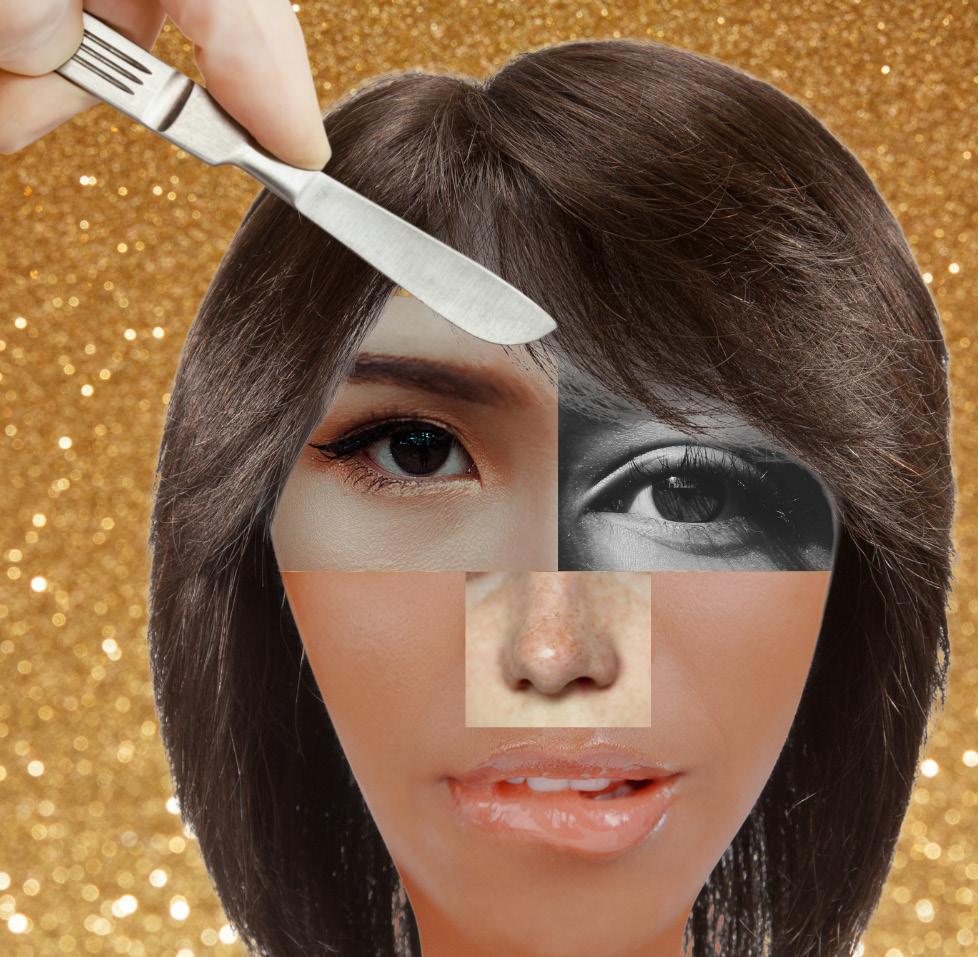
In the age of fashion and design, the world has seen trends recycled year after year, paying homage to decades’ past fashion. From the ‘70s to the 2000s fashion, bell bottoms to low-rise jeans, the fashion scene has typically repeated these cycles on a 20-year basis. However, the pace of each trend has picked up tremendously, and this comes with its own issues.
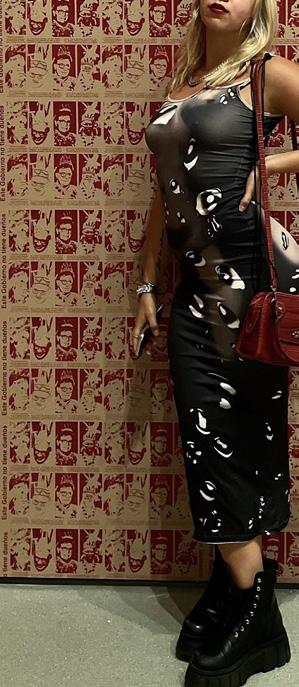
Current fashion trends pay tribute to early 2010 fashion and “Tumblr grunge,” with layers and dark colors. The angst and thick eyeliner have come back to life, with a Gen Z twist on it, including Doc Martens, flannels and chokers, but swapping out tight jeans for oversized ones.
These are especially prominent on social media platforms. Social media influencers follow these trends as they come and go, leaving Gen Z hyper-aware of every change in the industry and every trend they must keep up with to be “in style.”
It seems like just yesterday, the ‘90s-era trends were here, giving the media a glimpse of corsets, slip dresses and scrunchies once again. However, before those trends could even wrap up, Y2K fashion made its appearance, and has seeped into many of the current trends as well, including baggy pants and baby tees. It may be the first sign that the 20-year cycle is no longer running in a typical fashion.
photo by Anna WebberTracy Koski, a Michigan State University alumni who grew up in the 1970s, noted, “I have seen many of the trends I grew up with come back to life in recent years. Bell bottoms, hair clips, parachute pants. However, now things seem to run in a different cycle. I see trends pop up out of nowhere, and suddenly they are popular again. It’s hard to keep track of them all.”
It is unclear what will come after the current trends. The typical 20-year cycle has not been on track recently, and it seems hasty to restart the cycle. After all, it has not been long since it began. Many fashion lovers have guesses about what will come
next. “I think we will get a mix of ‘60s and ‘90s,” said Alexa Baldini, a fashion major at Michigan State University.
“We are already seeing these influences, the 1960s knee high-boots and mini skirts. But there are also predictions for [the] spring season [of] 2023 to have lots of blacks and dark colors, circling into ‘90s grunge. There’s currently an aesthetic with makeup and hair that’s super clean and put together, but people are starting to do the opposite with dark liner [and] dark lips. Again, that ‘90s grunge look,” said Baldini.
Baldini also noted that the cycle is
curving into a new era for fashion trends.
“We always see a [resurgence] in trends from long ago — they always come back. But now, we are seeing the mixing of many eras, and it is becoming a whole new thing,” said Baldini. This new era of style trends may be due to the influence of personal style, a timeless wardrobe specific to oneself only. Some social media influencers have already caught on to this trend and have been promoting it on multiple platforms, such as @sustainablychic on Instagram. Although, it doesn’t seem to have caught enough wind yet.
Some, however, think that Generation Z may have ended the cycle. With the refurbished and refined tastes of previous decades, the fashion world has become a mesh of multiple decades at the same time, making it hard to distinguish era trends that may be existing in harmony.
If anything, social media has played a large role in advancing the cycle, allowing for styles to be in one day, and out the next. The issue lies in overconsumption, as consumers
“ “
buy and buy to keep up with these trends.
Often on social media platforms, influencers are looking forward to what the next big thing will be. Everyone wants to be first, and to influence the start of a trend. No one wants to be left out and feel alienated for being “off-trend” or not having style.
Michigan State senior Ally Gilbreath, a lover of fashion, noted the cycle she has seen even in just the four years she has spent in college. “Freshman year, all we wore was skinny jeans and bright clothes. Patterned shirts, animal prints, neon. Having baggy pants was not considered trendy. Suddenly, a year later, everyone swore off skinny jeans. Baggy pants were in. Skinny jeans were looked at with dislike, even disgust. It was crazy to witness that change happening right in front of me,” Gilbreath said.
Some connect the death of the fashion cycle to the fast fashion industry. The lack of sustainability in fashion creates is creating a cycle of decade
trends spinning faster than ever before. Brands that follow the patterns of micro-trends take from the most current trending aesthetics, and quickly push them out to their own consumers. The most popular styles hit these fast fashion sites, and are gone as soon as the trend is over.
Not to mention, these trending designs are often stolen from smaller brands and sold by the larger companies at a cheaper price. Unfortunately, there is not much legal support for the small companies, and bigger brands will continue to use these designs to keep up with current fads.
The pressure to keep buying into these trends is a demand that is extremely unhealthy for the environment. By quickly and sloppily producing replicas in order to match
the fashion industry’s fast cycle of these trends, the resulting product is low quality and unsustainable.
According to Mariel Nelson of Worldwide Responsible Accredited Production, “... in 2019, 208 million pounds of waste were created by single-use outfits.” Nelson also noted that the textile industry is the second-largest polluter in the world, after oil.
Resorting to slow fashion practices would certainly slow down the trend cycle, as well as save our precious environment, which some companies are attempting to use already. The question is whether such a large industry is ready to do so as well.
The “slow fashion” movement works to create, “manufacturing and selling processes that are eco, ethical and green in one unified [phase]. It’s a revolutionary approach in the
The lack of sustainability in fashion is creating a cycle of decade trends spinning faster than ever before.
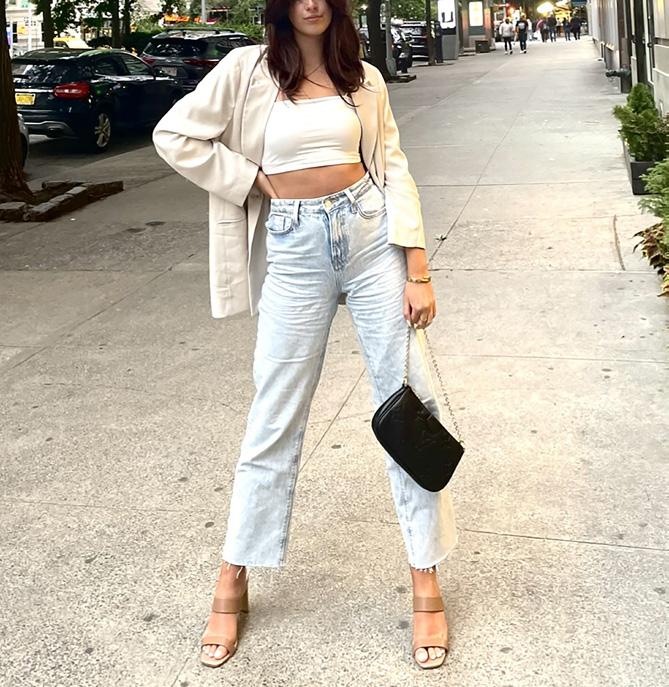
fashion world because it encourages slowing down rather than speeding up production, to emphasize quality over quantity and ensure [a] thorough understanding of a product’s environmental and social impact,” according to Nadine Manson, founder of Bewildher, a slow fashion company.
As the cycle becomes less rigid, perhaps these slow fashion companies will aid the influencers of today to adopt a more environmentally friendly style. All it takes is one highly regarded influencer or celebrity to start a new trend, and maybe this time for the better.
Although it is likely to never end, as trends always come back, by adopting a personal style and choosing timeless pieces, wardrobes can escape from the fashion trend cycle and its downfalls. Perhaps those choices may truly diminish the importance of trends, and allow everyone to enjoy their own unique fashion choices, as it is meant to be.
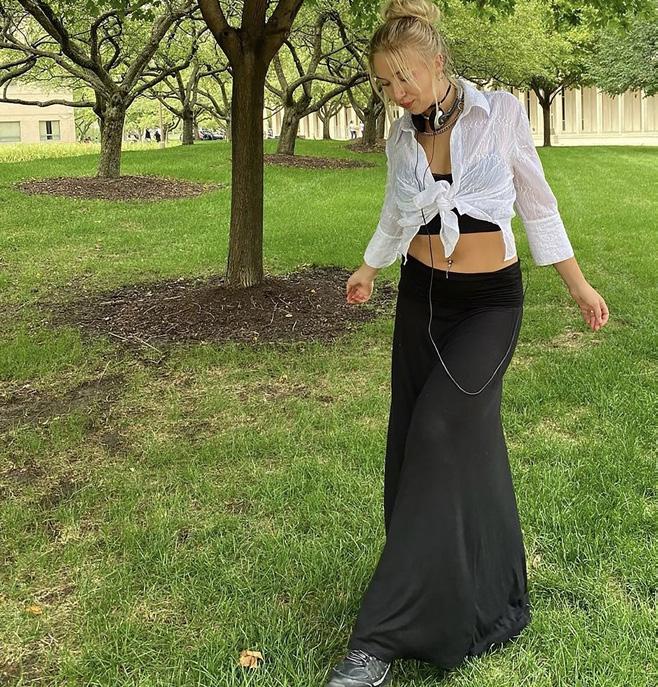

Jenna Piotrowicz is a senior majoring in professional and public writing, aspiring to be a writer or editor in her future. In her free time, she enjoys watching movies, TV shows and working on her own screenplays, hoping to create the next big feature film.

“ “
Most people pick up a book to escape into a new world, form connections with characters, or learn about a new topic. They see themselves in the stories they read or connect with the author. That is, unless one is in a minority group. Most of their reading experience is spent on the outskirts of foreign land while they watch the hero, who is often a white, cis-gendered man, save the village. But it’s unclear where the stories are for other demographics.
Book publishing is predominantly white— from corporate employees, to authors and characters. Publish-
ing has long since been a field for white, cis-gendered and heterosexual people to share their stories. However, conversations about diversity, equity and inclusion (DEI) are quickly making their rounds and gaining more importance.
Lee and Low Books, a medium-sized publishing company focusing on diversity in children’s books, conducted surveys in both 2015 and 2019 on diversity within the industry. This survey first covered the “Big 5” (Penguin Random House, Simon & Schuster, HarperCollins, Macmillan and Hachette Book Group) and
major review journals in 2015, then added academic press and literary agencies in 2019.
In 2015, the overall industry was dominated by white, cis-gendered, heterosexual and able-bodied women. Four years later, statistics remained almost identical, despite the addition of academic presses and literary agencies to the survey.
The few improvements made to the industry’s demographics occurred at the top. Here, Lee and Low found that about 60% of individuals at the executive level were still predom-
Yasmeen Amjadinantly white, cis-gendered, heterosexual and able-bodied women. This was a significant drop from 2015, when approximately 80% of the executive team fell into those categories.
Despite the industry being female-dominated, a majority of male employees find themselves in decision-making roles, holding more power and responsibility. This has been the experience of Catherine Cocks, the interim director and an
acquisitions editor at the Michigan State University Press.
Throughout her career, she has noticed a pattern. She says, “Most of the early-career and mid-career people are female, and then most of the men in publishing are at the top … but that is definitely a thing that I think pretty much every woman in the industry faces, and that’s not specific to publishing.”
Despite the pattern of gender and power, Cocks mentions that her male bosses have been “pretty supportive of [her] and of [her] interest in learning more and gaining more responsibility.” Cocks luckily found supportive mentors, but for many looking to break into the industry, finding a program to help develop
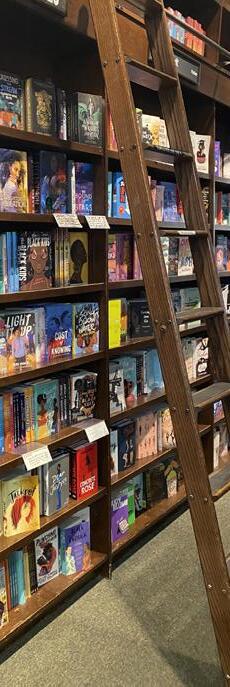
Despite the industry being femaledominated, a majority of male employees find themselves in decision-making roles.
these types of relationships can be crucial to career development.
After building her knowledge of editing, acquisitions editor at MSU Press Caitlin Tyler-Richards got “the Mellon University Press Diversity Fellowship, [which] opened a lot of doors for [her]. It provided access to a level of mentorship and a type of network that a lot of other women and people of color don’t get access to if they try to break into publishing.”
Other fellows in her program, however, shared a common concern about the treatment they received.
Rather than having their working knowledge of editing and the industry acknowledged, many were treated like interns with little to no knowledge or experience within the field. Contrary to this experience, Tyler-Richards
was quite positive and she was able to take her new found knowledge to the next level at MSU Press.
The two editors have made drastic improvements in DEI-related issues at the press. When looking for new hires, Tyler-Richards took the time to write job descriptions that were anti-racist and focused more on candidate experience, knowledge and ability, rather than their degrees, connections and other demographics. The pair also focuses on who their senior editors, authors and peer reviewers are.
In her interview, Tyler-Richards explains that, “with any project [MSU Press] acquires within [a certain community], [they] make sure that the project is peer-reviewed by a member of that community, or at least try very hard [to]. For instance, if a project centers around Zimba-
bwe, the peer reviewer will ideally be based in Zimbabwe.” Additionally, the pair makes a point to ask reviewers if a work cited the appropriate people, ensuring that a project accurately depicts said culture or group.
Commercial publishing, on the other hand, has larger budgets and thus can do more visual changes compared to a small, scholarly press like MSU’s. For example, larger publishers, like Penguin Random House and the Hachette Book Group, are changing the hiring process and incorporating anti-racist training to foster a more inclusive workplace. Some companies even make donations to organizations such as We Need Diverse Books and the Equal Justice Initiative.
The lack of diversity internally is mirrored in published and
The lack of diversity internally is mirrored in published and bestselling authors. “ “
bestselling authors. In an article published by The New York Times, it was found that 11% of fiction books published in 2018 were written by authors of color, just 10% shy of Lee and Low’s percentage of people of color in the industry overall. A similar pattern occurred from the
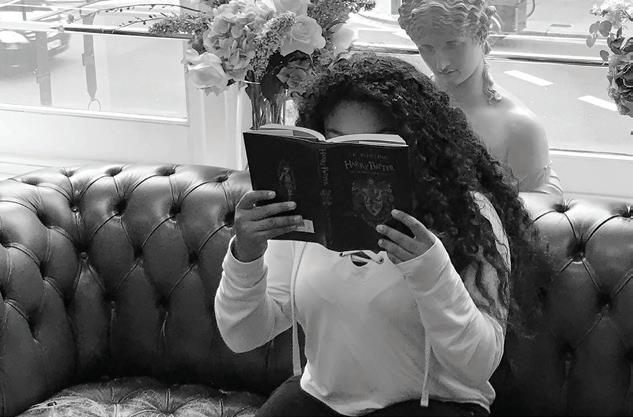
late ‘60s to early ‘80s, when Toni Morrison was an editor at Random House.
During Morrison’s time at Random House, “3.3% of the 806 books published by Random House” were written by Black authors. Howev-
er, once Morrison left, numbers dropped significantly, with just two books out of 512 being written by Black authors in 1990.
In 2020, books by authors of color began to climb the bestsellers lists around the same time as social and
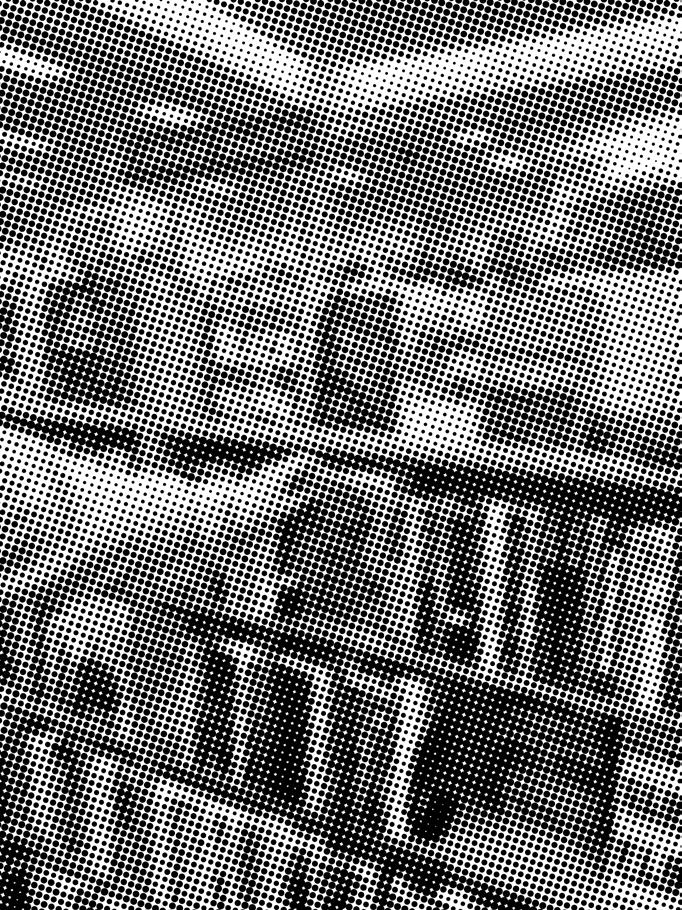
civil rights movements — such as Black Lives Matter and Stop Asian Hate — gained momentum after an onslaught of hate crimes took place over the summer. This seems to be a trend within the industry: support for minority authors often follows the news cycle.
These social justice movements also lead to several social media trends surrounding diversity in publishing, the most notable hashtags being #publishingpaidme and #diversifyyourshelves. The #publishingpaidme trend was created with the intention to expose racial pay disparities in the industry.
In support, many white authors hopped on the trend, revealing that
they were paid thousands of dollars more than their counterparts in minority groups. For example, debut author Mandy Len Catron shared on twitter that she, a white woman, was paid more than double in an advance than renowned author of color, Roxane Gay. Due to the outrage on social media, publishing houses released statements announcing that they stood against racism. The second trending hashtag #diversifyyourshelves focuses on consumers’ actions, rather than publishers. The goal of this hashtag is to encourage readers to read more diversely and with intention. Support for these hashtags hold publishers, and readers, accountable
for improving diversity in books and the field overall.
This is just the beginning of the progress surrounding DEI in publishing. Change is happening through the initiatives and actions of bibliophiles everywhere, and people seem to be noticing. Catherine Cocks notes, “[There’s] a lot more commitment … to ensuring that that kind of diversity is a central part of what we do.” As a result, the publishing industry is on its way to becoming an equitable field for everyone.
Yasmeen (Yazzy) Amjad is a senior pursuing degrees in psychology and professional and public writing. She hopes to use her knowledge of rhetoric and psychology to effectively edit and write stories. Yazzy is passionate about all forms of storytelling. In her free time, she enjoys baking, watching movies and TV shows, listening to podcasts, and reading for hours on end.